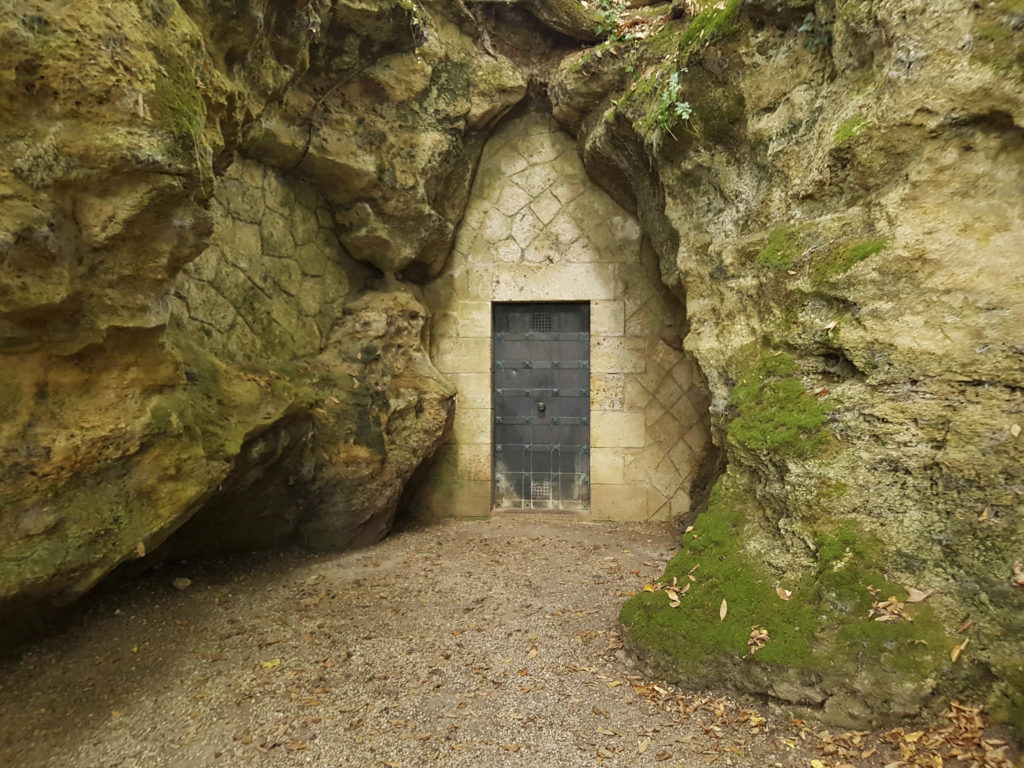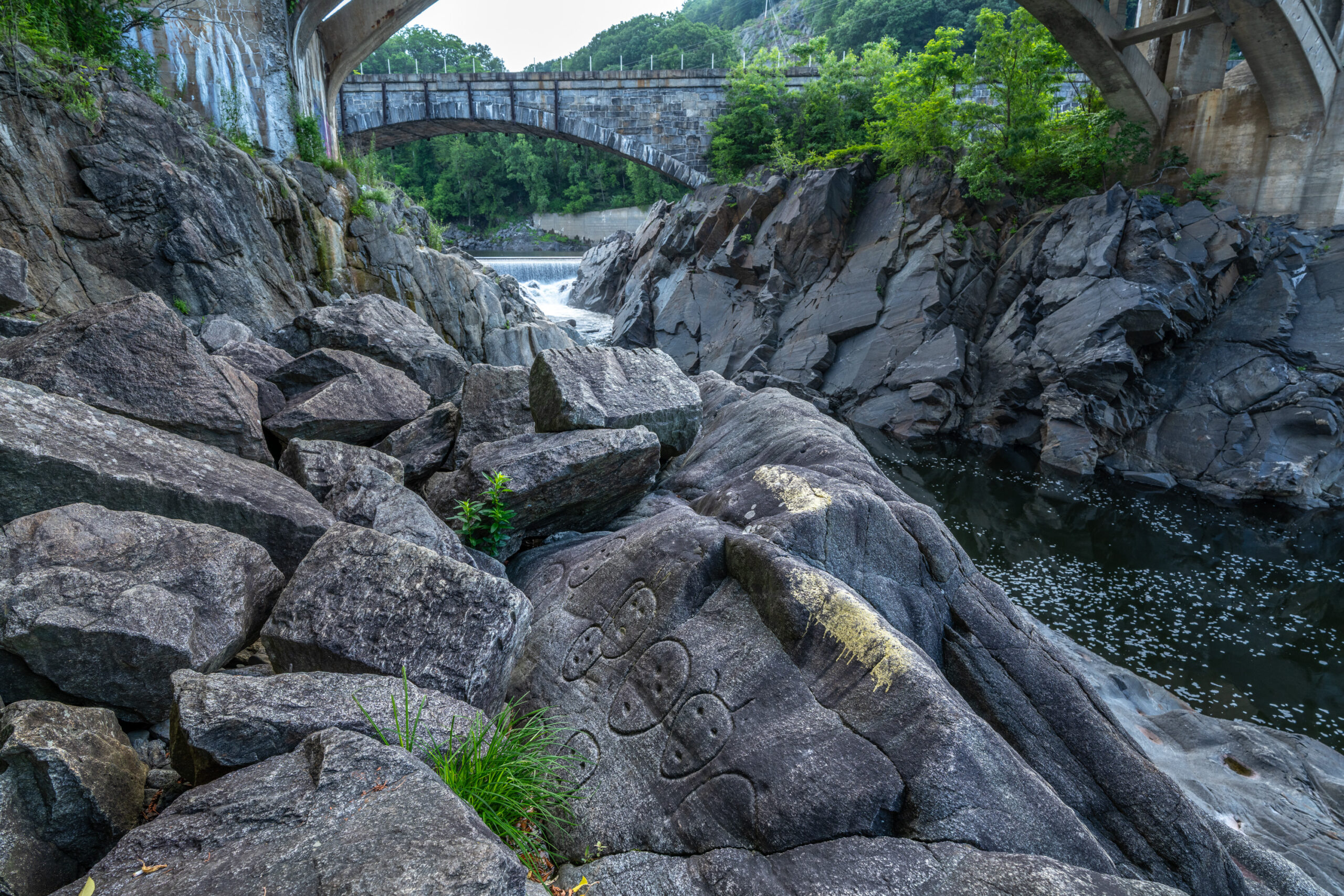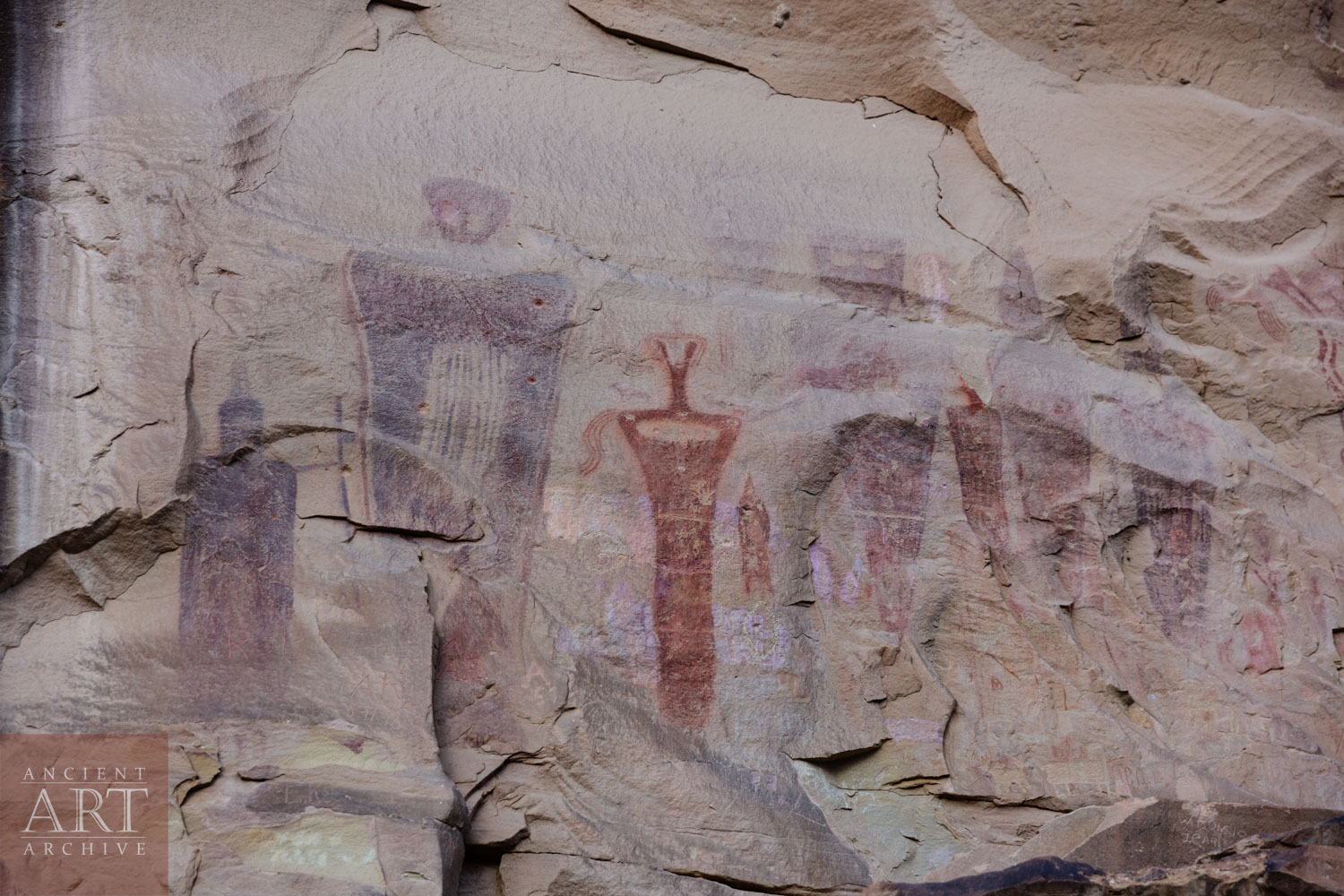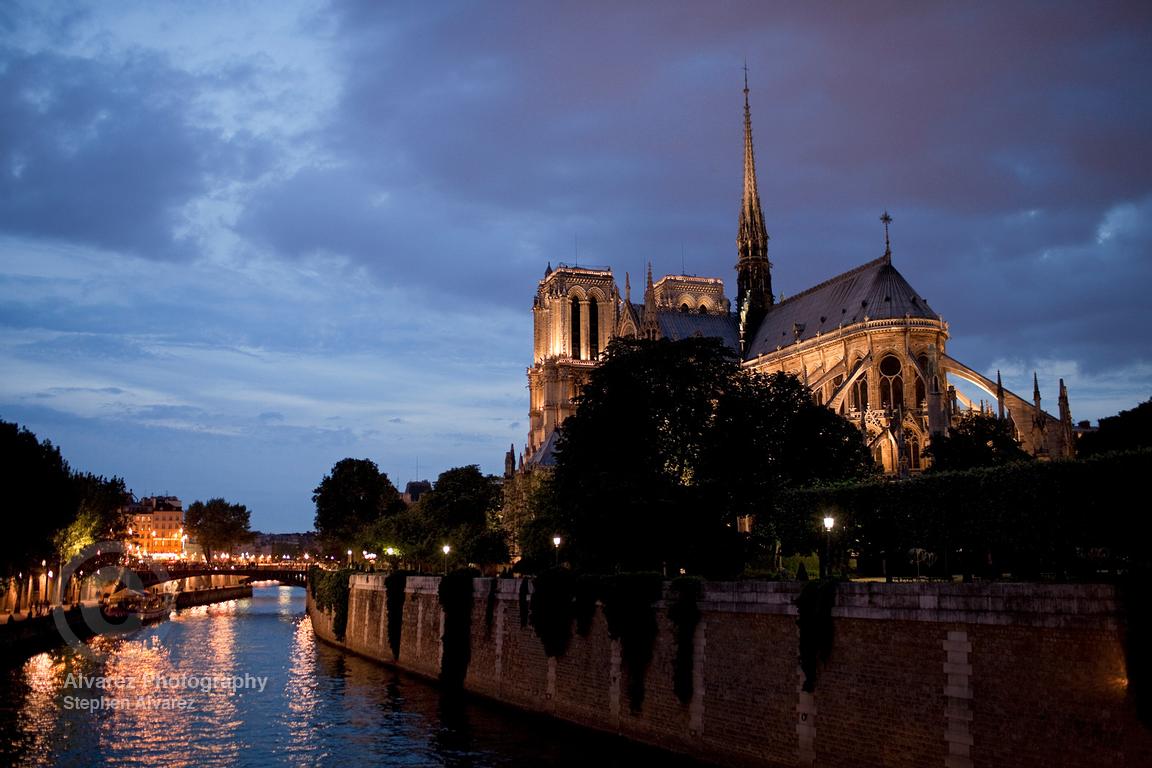The entrance door to cave Pair-non-Pair. It contains engravings of mammoth, horses, ibex and Megaloceros. The cave was identified in 1881 by archeologist François Daleau.
I visited Grotte Pair-non-Pair last week with a National Geographic travel group. I knew about the cave and its Aurignacian era engravings but honestly did not think that the engravings would be very impressive. Wow was I wrong!
Pair-non-Pair is small, little more than a rock shelter but it contains a remarkable collection of engravings. Horses, aurochs, ibexes, mammoths, and a megaloceros are all engraved into the walls. There are faint remnants of red and black pigment on the engravings reminiscent of the Venus of Lassel. What is more remarkable is that the cave was also a living area. Fireplaces, stone tools, and discarded bones indicate that Pair-non-Pair was occupied for a period of 60,000 years. The first occupants were undoubtedly Neanderthals beginning 80,000 years B.P. who were replaced by humans by the start of the Aurignacian 30,000 years B.P. Artwork in a Paleolithic living area is very rare.
The cave itself was found quite by accident in 1881 when a farmer went to recover a cow whose foot had become lodged in a hole in the pasture. Upon investigation, he found the chamber containing the engravings and called in archeologist François Daleau.
Daleau began a systematic investigation of the cave. He recovered more than 15,000 stone tool fragments and 6,000 animal bones. The tools later helped establish the cave’s habitation chronology. However, the art is what sets this cave apart.
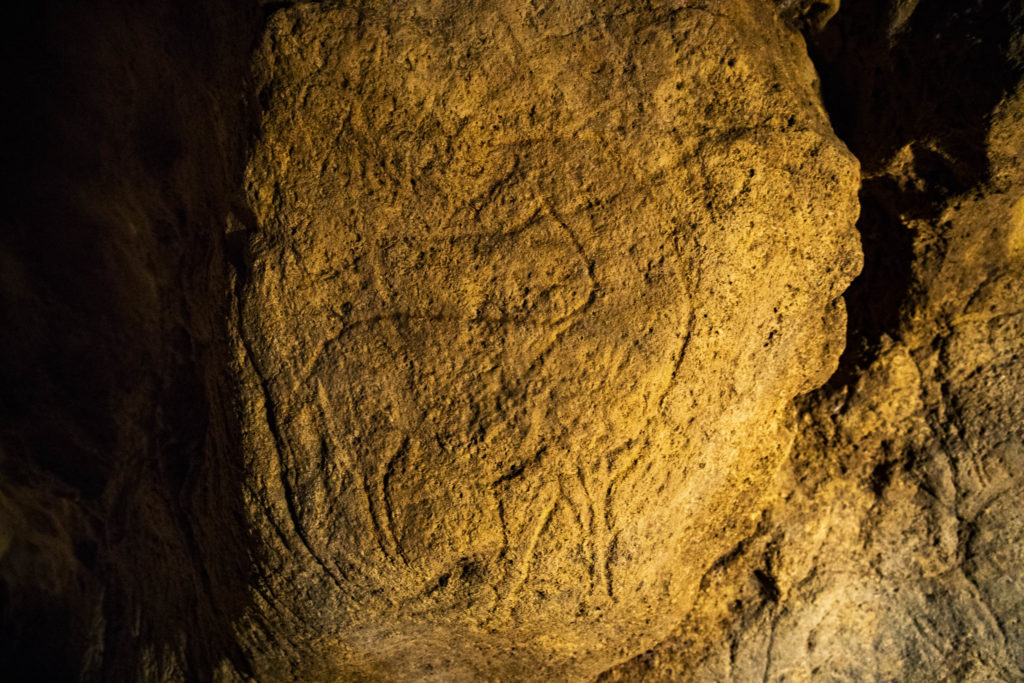
There is a simplicity to the line of the engravings that is at once elegant and powerful. For me looking at them reinforces a feeling of connection to the artists and to humanity. Many of the animals represented in the cave are shown in pairs. Two mammoths, two aurochs face to face, two horses side by side. The repetition is reminiscent of the horses, lions, and rhinoceroses in Chauvet Pont d’Arc.
Pair-non-Pair was the third Paleolithic art cave to be discovered. Unlike the tragedy of Altamira, no one questioned the authenticity of Pair-non-Pair’s artwork or the validity of Daleau’s findings.
Amazingly enough this cave is open to the public. This may be the oldest artwork on display in situ anywhere in Europe. Groups are limited to 18 and reservations are required. Go to the Pair-non-Pair site (here) for more information.
-Stephen Alvarez
